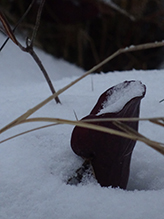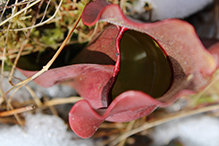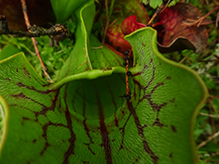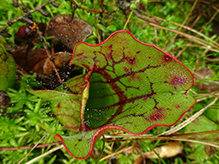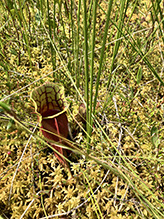Northern purple pitcherplant
(Sarracenia purpurea ssp. purpurea)
Conservation • Wetland • Description • Habitat • Ecology • Use • Distribution • Taxonomy
Conservation Status |
|||
| IUCN Red List | LC - Least Concern |
||
| NatureServe | NNR - Unranked SNR - Unranked |
||
| Minnesota | not listed |
||
Wetland Indicator Status |
|||
| Great Plains | OBL - Obligate wetland |
||
| Midwest | OBL - Obligate wetland |
||
| Northcentral & Northeast | OBL - Obligate wetland |
||
Description
Northern purple pitcherplant is an easily recognized, long-lived, carnivorous plant. There are no other plants in Minnesota that even vaguely resemble it. It occurs in the United States from Maine to New Jersey west to Minnesota, in Washington State, and throughout southern Canada. It is found in bogs, fens, swamps and peatlands. It grows under full sun in sphagnum moss or in soil that has both peat and sand. It obtains most of its nutrients from captured insects. The soil it grows in is nutrient-poor and usually acidic, and cannot support many other plants. Individual plants can live up to 50 years in favorable conditions. However, its population has been declining due to habitat loss and possibly to nitrogen deposition from air pollution.
Northern purple pitcherplant is a native, perennial, carnivorous forb. It rises on a radiating cluster (rosette) of 6 to 10 leaves and a single flowering stem from an underground stem (rhizome) and fibrous roots. It often forms dense clumps, sometimes floating masses at the edges of bog ponds and lakes. The rhizome is short, ⅛″ to ⅝″ (3 to 15 mm) in diameter, and usually vertical, sometimes horizontal.
The leaves are modified into pitchers. The pitchers appear with or after the flowers and persist throughout the summer. They may be upright, curve upward from the base (ascending), or decline on the ground with just the tip ascending (decumbent). They are variable in color, usually green with reddish-purple veins, often reddish-purple just near the tip, sometimes completely reddish-purple. They are firm, slightly S-curved, and bulging in the middle. They are usually 2″ to 10″ (5 to 25 cm) long, rarely up to 17¾″ (45 cm) long, and 1 3⁄16″ to 2⅜″ (3 to 6 cm) in circumference at its widest point, 3½ times as long as wide. The outer surface is hairless, sometimes waxy. The orifice is round to oval, 9⁄16″ to 1 7⁄16″ (14 to 36 mm) wide, and open to the sky, allowing the pitcher to collect rainwater.
Each pitcher has a winged extension on the upper (inner) side and a hood at the top. The wing is ⅜″ to 1 3⁄16″ (1 to 3 cm) wide. The hood is thick, erect, heart-shaped, notched at the tip, ¾″ to 2″ (2 to 5 cm) long, and 1 3⁄16″ to 2¾″ (3 to 7 cm) wide. The two rounded lobes at the base arch inward over the orifice. The inner surface is covered with numerous, stiff, downward-pointing, 1⁄64″ to 1⁄16″ (0.6 to 2.2 mm) long hairs.
The inflorescence is a single flower at the end of a long, leafless, stalk (scape). The scape is hairless, erect, green to reddish-purple, and 8⅝″ to 31⅛″ (22 to 79 cm) long.
The flower is 2″ to 2½″ wide and droops at the end of the scape. There are 5 outer floral leaves (sepals), 5 petals, 50 to 100 stamens, and 1 style. The sepals are purplish-red, broadly egg-shaped–triangular, ⅞″ to 1⅝″ (22 to 42 mm) long, and ⅝″ to 1⅜″ (15 to 35 mm) wide. They curve inward just at the tips. The petals are red to maroon, and are fiddle-shaped, with a small basal portion and a large outer (distal) portion. They curve inward, covering the style. The distal portion is broadly egg-shaped, 1 5⁄16″ to 2 1⁄16″ (33 to 53 mm) long, and ⅝″ to 1 3⁄16″ (15 to 30 mm) wide. The stamens are grouped into 10 to 17 bundles. The style is expanded at the tip into a very broad, 1 9⁄16″ to 2″ (4 to 5 cm) in diameter, umbrella-like disk with 5 inward-curved arms.
The fruit is a globe-shaped or egg-shaped, ⅜″ to ¾″ (1 to 2 cm) in diameter capsule. As the capsule develops the petals drop off but the sepals persist.
Height
8⅝″ to 31⅛″ (22 to 79 cm)
Flower Color
Reddish-purple
Similar Species
Habitat
Wet. Bogs, marshes, swamps, fens, and peatlands. Full sun. Acidic soil with sphagnum moss or peat and sand.
Ecology
Flowering
March to August
Pests and Diseases
Use
Distribution
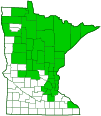
Nativity
Native
Occurrence
Taxonomy
Kingdom
Subkingdom
Pteridobiotina
Phylum
Tracheophyta (Vascular Plants)
Class
Order
Ericales (heathers, balsams, primroses, and allies)
Family
Sarraceniaceae (New World pitcher plants)
Genus
Sarracenia (North American pitcher plants)
Species
Sarracenia purpurea (purple pitcher plant)
Subordinate Taxa
northern purple pitcherplant (Sarracenia purpurea ssp. purpurea) ![]()
southern purple pitcherplant (Sarracenia purpurea ssp. venosa)
southern Appalachian purple pitcherplant (Sarracenia purpurea var. montana)
Synonyms
Sarazina grandiflora
Sarracenia aurea
Sarracenia grandiflora
Sarracenia purpurea var. gibbosa
Sarracenia purpurea var. typica
Sarracenia terraenovae
Common Names
common pitcherplant
huntsman's-cup
northern pitcher plant
northern pitcherplant
northern purple pitcher plant
northern purple pitcherplant
pitcherplant
purple pitcher plant
purple pitcherplant
side-saddle flower
sweet pitcherplant
turtle socks
Glossary
Ascending
Growing upward at an angle or curving upward from the base.
Decumbent
Reclining on the ground but with the tip ascending.
Rhizome
A horizontal, usually underground stem. It serves as a reproductive structure, producing roots below and shoots above at the nodes.
Rosette
A radiating group or cluster of leaves usually on or close to the ground.
Scape
In plants: An erect, leafless stalk growing from the rootstock and supporting a flower or a flower cluster. In insects: The basal segment of the antenna.
Sepal
An outer floral leaf, usually green but sometimes colored, at the base of a flower.
Visitor Photos
Share your photo of this plant.
This button not working for you?
Simply email us at info@MinnesotaSeasons.com.
Attach one or more photos and, if you like, a caption.
Nicole Rojas-Oltmanns
These were taken on or near the equinoxes and solstices in the bog at Lake Bemidji State Park beginning in December, 2024.
Dale |
||
River from lake Alton going north |
||
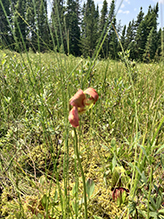 |
||
MinnesotaSeasons.com Photos
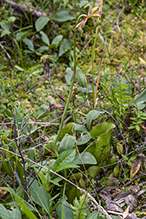 |
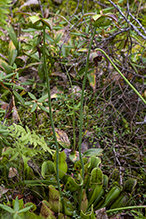 |
|
Plant |
Plant |
|
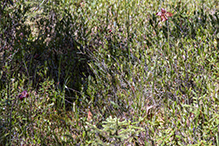 |
||
Plant |
|
|
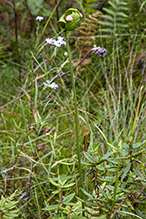 |
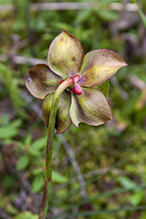 |
|
Inflorescence |
Flower |
|
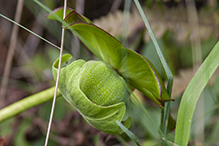 |
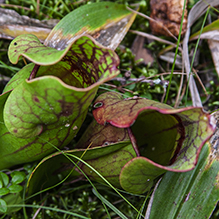 |
|
Flower |
||
|
||
|
||
|
Leaves |
|
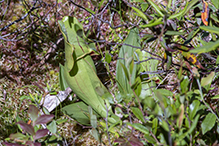 |
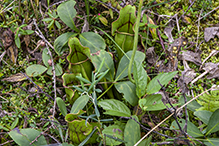 |
|
Leaves |
Leaves |
|
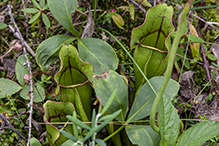 |
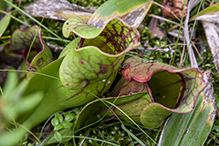 |
|
Leaves |
Leaves |
|
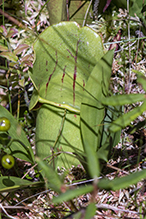 |
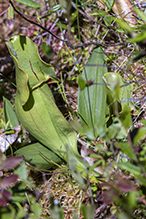 |
|
Leaves |
Leaves |

Slideshows
Purple Pitcher Plant
Andree Reno Sanborn

Visitor Videos
Share your video of this plant.
This button not working for you?
Simply email us at info@MinnesotaSeasons.com.
Attach a video, a YouTube link, or a cloud storage link.
Other Videos
Wild Carnivorous Plants - Red Sarracenia purpurea
Liguus

Visitor Sightings
Report a sighting of this Plant.
This button not working for you?
Simply email us at info@MinnesotaSeasons.com.
Be sure to include a location.
Minnesota Seasons Sightings

